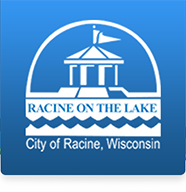-
Public Health Department
Main: 262-636-9201 Community Health: 262-636-9431 Environmental Health: 262-636-9203 Fax: 262-636-9564
After-hours Public Health Emergencies: 262-886-2300 Email: PublicHealth@CityofRacine.orgLocation:
730 Washington Avenue Racine, WI 53403
Hours:
Administration &
Community Health Division Monday – Friday 8:00 A.M. – 5:00 P.M.Environmental Health Division Monday – Friday 8:00 A.M. – 12:00 P.M. 1:00 P.M. – 4:30 P.M.
Water Safety
-
The City of Racine Public Health Department Laboratory Division is involved in many public access and education initiatives, primarily associated with coastal recreational areas. Water safety is important for anyone who lives in or visits Racine County and uses one of our beautiful Lake Michigan beaches or inland bodies of water.
Swimming SafetyBelow is information on how to be safe when swimming or playing near water, including rip currents, drowning prevention, and features found in and along Lake Michigan.
Great Lakes Beach Hazards Map | National Weather Service
For more information about water safety:
Great Lakes Water Safety Consortium (GLWSC)
Centers for Disease Control and Prevention (CDC) – Drowning Prevention
Harmful Algal Blooms
Blue-green algae (cyanobacteria) occur naturally in freshwater. Under certain conditions, such as warmer water temperatures, high nutrient levels, and plentiful sunshine, they can multiply rapidly to produce a bloom. When there are toxins (cyanotoxins) present in the blooms, they are called harmful algal blooms (HABs). Coming into contact with, inhaling, and/or swallowing water containing the cyanotoxins can cause health problems for people and animals.
There are several characteristics to watch for that indicate the presence of a possible HAB. While only laboratory testing can confirm if toxins are present, avoid any water that shows signs of a HAB. These include:
- The water appears green, like “pea soup”
- The water has a swampy odor
- There are scum, mats, foam, and/or paint-like streaks in the water or on the shore
If the water has any of the above signs, do not go into the water and do not let children or pets play in or drink it. In addition, the Public Health Department Laboratory has signs warning beach visitors about the presence of HABs in Racine. Do not enter the water if one of these signs is posted.
You can also take a look at the CDC for further information on harmful algal blooms.

See the links below for more information about identifying HABs, why they are dangerous, and how to avoid getting sick.
EPA National Recommendations for Exposure to Cyanotoxins
Look Out for Harmful Algal Blooms








